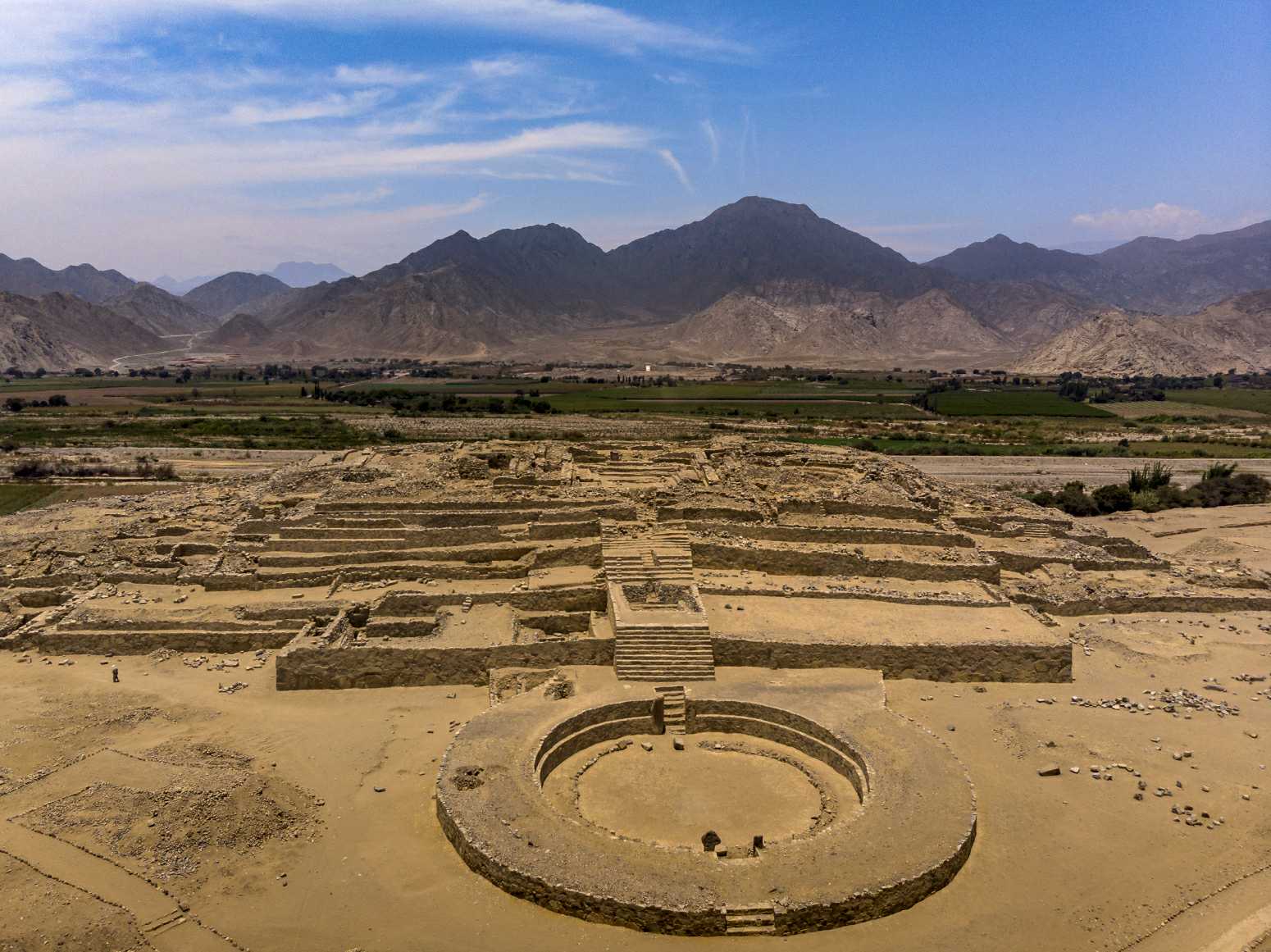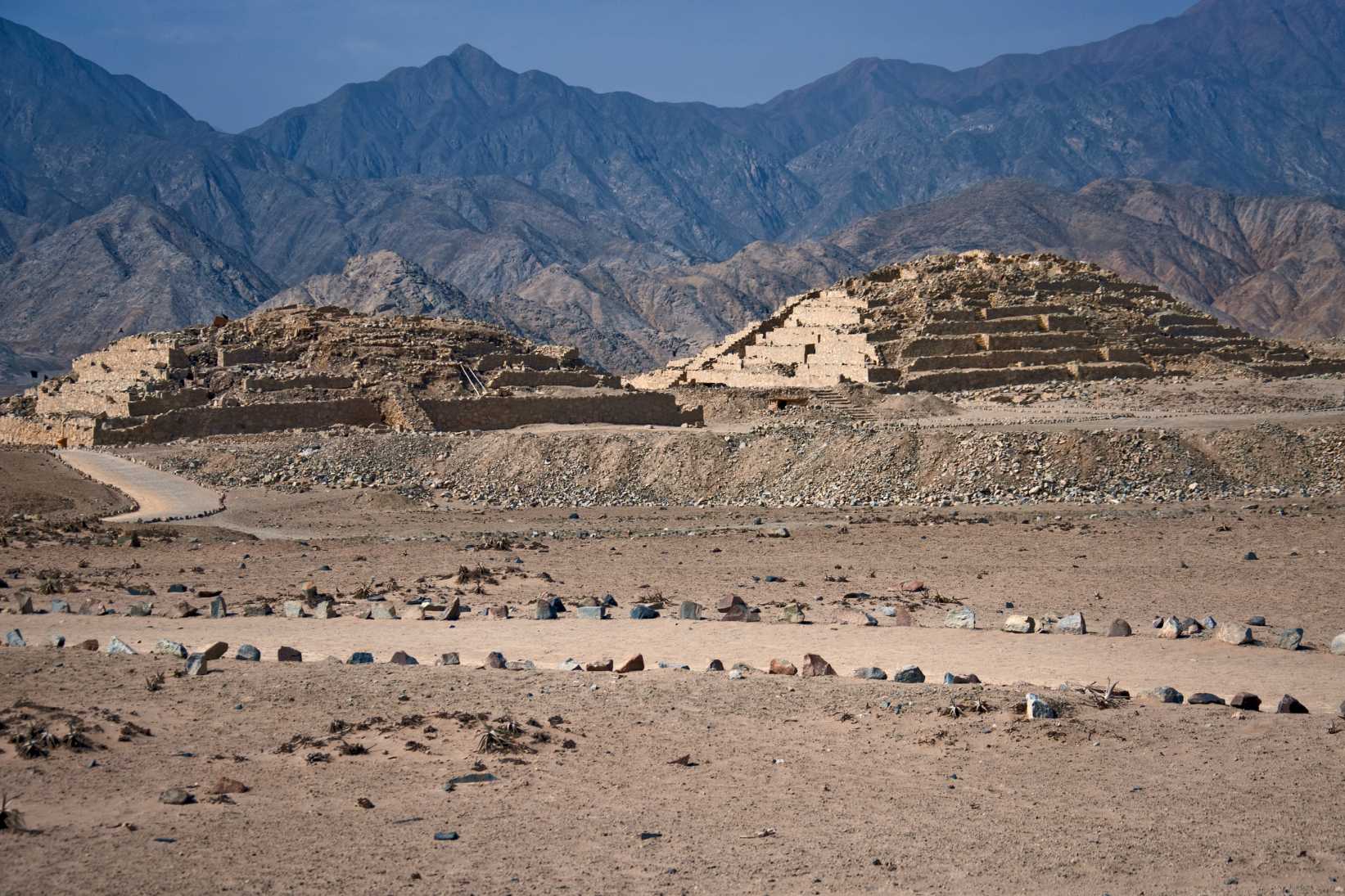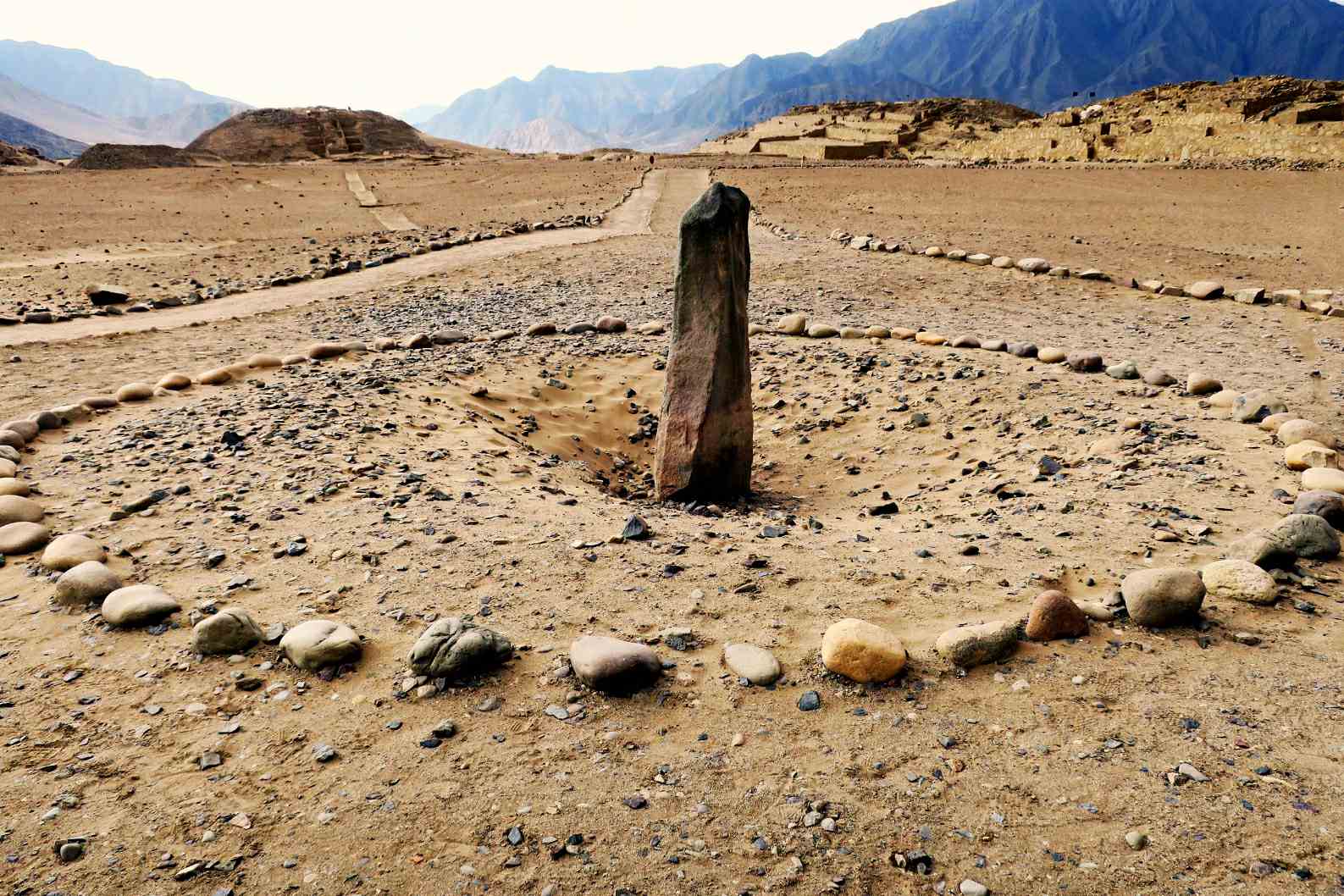Located in the Peruvian Andes Mountains, on a high, arid terrace overlooking a lush river valley, is a series of American pyramids that may be way older than the Egyptian pyramids. They are the remains of the ancient city of Caral, which has been referred to as the “oldest society in the Americas.”

The Sacred City of Caral is one of the oldest towns ever discovered, with roots that reach back to Mesopotamia, ancient Egypt, China, and Mesoamerica, among other civilizations. It is characterized by magnificent pyramids, a large circular plaza, and of course, a vast arena where gladiatorial fights or theatrical events would be staged in front of a large crowd.
Caral was discovered in 1905 by a German archaeologist named Max Uhle, who was conducting a comprehensive study of ancient Peruvian cities and cemeteries at the time. Uhle was intrigued by the scene, but he was unaware that the big hills in front of him were truly pyramids until later.

That discovery was only made by archaeologists in the 1970s. In spite of all of this, it would be another two decades until Peruvian archaeologist Ruth Shady began conducting systematic excavations in the region.
Shady began a two-year survey of the Supe Valley in1993, working on weekends with the assistance of her students. The survey resulted in the discovery of an astonishing 18 distinct settlements, which she documented in her book.

No one knew how old they were, but the similarities between the towns and their more rudimentary technologies suggested that they belonged to a single, ancient society that preceded all other cultures in the area.
The pyramids that you see today were built approximately 2,600 BC, and while work paused for a period around that time, researchers believe the process continued until around 2,000 BC. In terms of age, they are roughly equivalent to the Giza Pyramids and the Egyptian Pyramids built for Cheops, which were built between 2,600 and 2480 BC, respectively.
Even though the Peruvian city of Caral is estimated to have been in existence for roughly 5,000 years, its people appear to have been quite intelligent, as proven by the fact that they employed underground ducts to keep their fires blazing regardless of the weather outside.
It’s also odd to think about how densely inhabited Caral was, yet no battlements or weapons, or even disfigured bodies, have ever been unearthed there. Instead, the teams discovered 32 flutes made of condor and pelican bones, as well as 37 cornets made of llama and deer bones, which they used to play music.
Approximately 60 hectares (150 acres) in area, the city has a population of well over 3,000 people. There were many magnificent temples and mansions in the area, as well as the previously mentioned outrageously large arena. Because no one knows why they were able to figure out how to operate ventilation systems all those years ago, a plethora of possibilities have been proposed in an attempt to explain why they did it.
At this point, it is an only supposition that they learnt how to do it from an intelligent extraterrestrial race; no conclusive evidence has been shown to support this hypothesis.
To the credit of Tommie S. Montgomery, the irrigation canals that sprang up all across town were so exceptional that they would be considered masters of their craft even by today’s standards.
In the end, Caral was abandoned around 1,800 BC when the inhabitants were forced to evacuate because of a prolonged drought, forcing them to look for a new home or face being buried alive in the sand.



